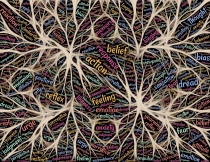For people with substance use disorder, exposure to drugs or things that remind them of drugs can trigger drug craving, which can sabotage efforts to stop using. This can be explained, in part, by what is called attentional bias—the tendency for drug-associated cues to intrude upon thinking and divert a person’s attention away from what they are doing, and toward those drug-related stimuli. Attentional bias is clinically important, because it correlates with current drug use and the risk of relapse.
Researchers can assess attentional bias by measuring how long it takes people to perform a cognitive task when exposed to drug cues that are irrelevant to that task. The lack of animal models of attentional bias, however, has made it difficult to determine which brain regions are involved in the process. Scientists at NIDA’s Intramural Research Program (IRP) have now developed such a model using animals with a history of cocaine self-administration in previous research. They exposed animals to both cocaine-associated cues and non-drug cues while the animals performed a simple task requiring them to touch a target to receive a reward. The researchers simultaneously recorded electrical activity in brain regions known to be involved in addiction. They found that in trials with cocaine-related distractor cues, subjects took longer to respond compared to trials with non-drug cues. In addition, neurons in the orbitofrontal cortex were activated more during trials with cocaine associated cues, compared to those with the non-drug cues. The brain’s dorsal and ventral striatum, on the other hand, did not distinguish between drug and non-drug cues.
These data suggest that cortical mechanisms, especially in the orbitofrontal cortex, are likely involved in attentional bias to cocaine-associated environmental cues and suggest this area of the brain as a locus of additional research on this process. Understanding which regions of the brain are involved in attentional bias could help researchers develop interventions to prevent relapse triggered by drug cues.

